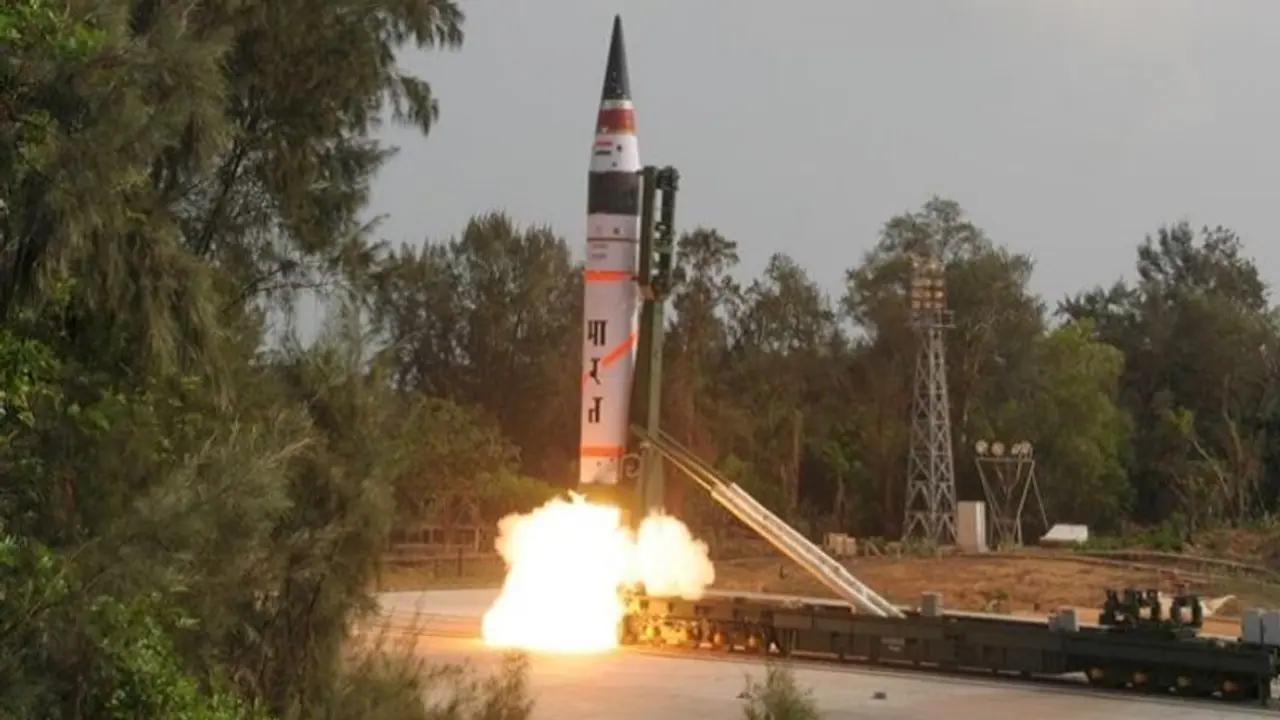Prior to this, India had Agni-III which was the most extended-range missile with a reach distance of up to 3,500 kilometers. This range could not cover the far eastern and northern territories of adversaries.
Defence Research & Development Organisation (DRDO) has successfully tested Agni-V ballistic missile with Multiple Independently Targetable Re-Entry Vehicle (MIRV) technology under Mission Divyastra.

The MIRV technology means a single missile can carry multiple warheads to different locations. The fire-testing coincided with the presence of a Chinese research vessel, the Xiang Yang Hong 01 in the Bay of Bengal region.
Mission Divyastra: Agni-5 missile's first flight test successful; proud of DRDO, says PM Modi
This is the second Chinese spy ship to enter the oceans around India in the past few weeks.
India has planned to carry out two nuclear-capable ballistic missiles — including the K4 submarine-launched ballistic missile and the land-based Agni-V surface-to-surface ballistic missile, between March 11 – 16.
Prior to this, the Chinese spy ship Yuan Wang 06 had entered into the Indian Ocean Region in November 2022 days before India’s planned missile test. Later, India cancelled the Notice to Airmen (NOTAM) , a no-fly zone in the Bay of Bengal for the tests slated on 10-11 November 2022.
In December that year, after India issued a NOTAM over the Bay of Bengal, the Chinese research vessel, the Yuan Wang 05, made a U-turn on its course and headed back to the IOR.
Explained: What is MIRV technology, and why it makes Agni V even more lethal
The Agni-5 missile, an intercontinental ballistic missile (ICBM), which has a capability of reaching distances between 5,500 -- 5,800 kilometers, represents a significant advancement in India's strategic defence capabilities.
It is pertinent to mention here that it would strengthen India's nuclear deterrence, particularly in response to potential threats from the eastern borders.
Prior to this, India had Agni-III which was the most extended-range missile with a reach distance of up to 3,500 kilometers. This range could not cover the far eastern and northern territories of adversaries.
India has been working to reinforce its nuclear triad that involves the capacity to launch nuclear missiles from land, air, and sea.
Know about Agni-V
As far as capability of Agni-V is concerned, the missile can cover almost the entire Asian continent, including the northernmost regions of China, as well as some parts of Europe.
In India’s history, Agni-V represents the farthest-reaching weapon, also the first to be launched at its maximum operational range, surpassing 5,000 kilometers.
CAA rules now in effect: What is Citizenship Amendment Act & what does it ensure? Key FAQs explained
With this test-firing, India has joined an elite group of countries having MIRV capability. The countries are the United States, Russia, China and France.
The system is equipped with indigenous avionics systems and high-precision sensor packages, ensuring that the re-entry vehicles accurately hit their designated targets.
The capability is an enunciator of India’s growing technological prowess. It must be mentioned here that the project director of Agni-V is a woman.
